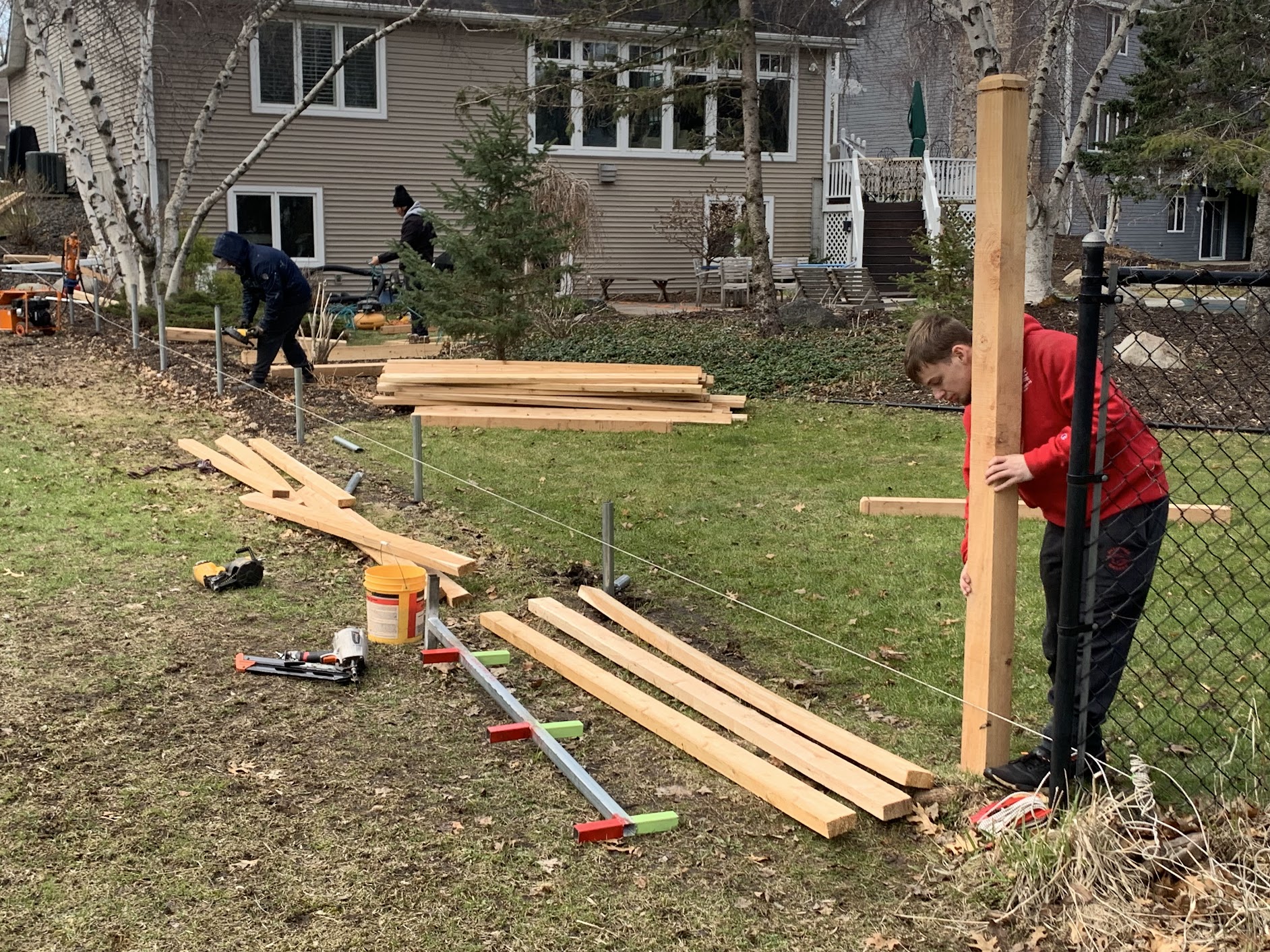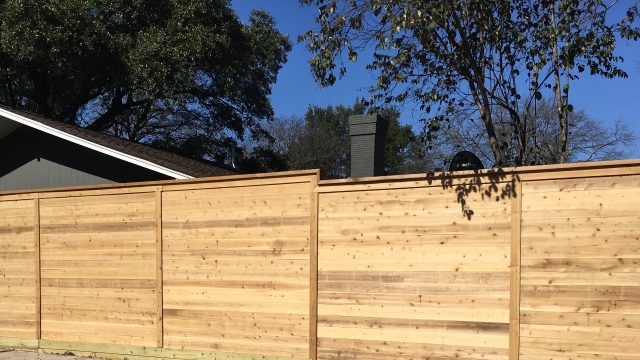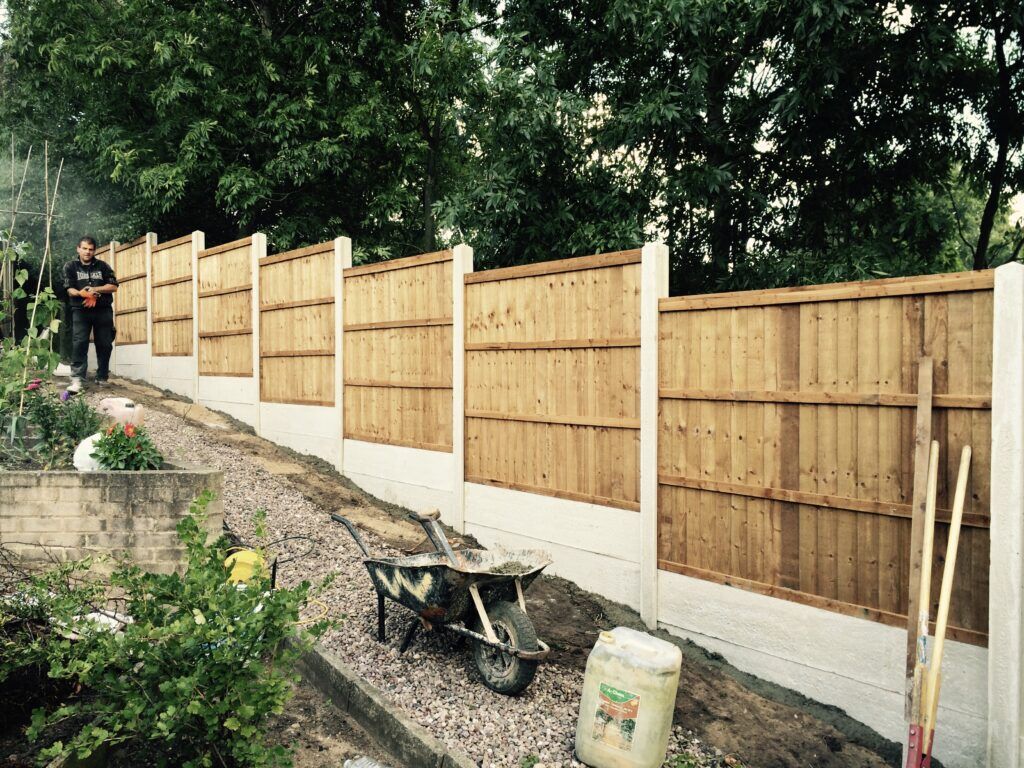Step-by-Step Overview to Mounting a Wood Fencing for Your Home or Property
Installing a wood fencing can substantially enhance both the functionality and visual appeal of your property. Comprehending these actions not only ensures a sturdy setup however also contributes to long-lasting contentment.
Preparation Your Fence Setup
When starting the installment of a timber fence, careful planning is important to make sure an effective outcome. Begin by analyzing the purpose of the fence-- whether it is for privacy, protection, or aesthetics-- because this will certainly affect the layout and design. Next off, assess the property lines, taking care to validate the boundaries with a study or title deed to prevent disputes with neighbors.
Consider regional zoning legislations and house owners' association standards, as these might dictate fence height, layout, and materials. It is a good idea to acquire the necessary authorizations before starting job, as this can prevent legal issues later on.
Furthermore, take into consideration the terrain and dirt problems of your home. Irregular ground may require extra modifications throughout setup, while rough soil may demand customized tools.
Finally, create an in-depth plan that includes measurements, the variety of articles, and the spacing in between them. A clear design will certainly facilitate the setup process and ensure that you have actually all needed products handy. By adhering to these preparation actions, you can set a strong foundation for an effective timber fence installment.
Selecting the Right Products
Choosing the suitable products for your timber fence is important to guaranteeing resilience and visual charm. One of the most typical kinds of timber made use of for fence consist of cedar, redwood, and pressure-treated pine. Cedar and redwood are naturally resistant to degeneration and insects, making them exceptional selections for durability. Their rich colors and all-natural grain patterns also boost the aesthetic appeal of your home.
Pressure-treated want is an additional preferred option, as it is usually extra affordable. Nevertheless, it needs regular upkeep and treatment to lengthen its lifespan. When picking timber, think about the environment of your area; for instance, locations with high moisture may take advantage of wood species with better resistance to dampness.
Additionally, you need to evaluate the fencing style and function. A picket fencing may require different product specifications contrasted to a privacy fencing. Choose thicker boards for architectural integrity, specifically in high-wind locations. Finally, think about the surface; without treatment timber might need discoloration or securing to protect versus weather condition elements. By carefully picking your materials, you can guarantee that your wood fence will stand the examination of time while matching your home's landscape.
Preparing the Setup Site

Preparing the setup site is a vital action in making sure the successful building and construction of your wood fencing. Proper preparation not only helps with a smoother installation procedure yet additionally contributes to the longevity and security of the fencing.

Following, analyze the surface. Eliminate any barriers such as rocks, roots, or debris that might impede the installment procedure. Think about leveling it or adjusting your fence design as necessary if your website has unequal ground. In addition, check for below ground energies by calling your neighborhood utility business. This is vital to avoid damages throughout installation and guarantee safety and security.
Mounting the Fence Messages

Next, dig openings for each post, guaranteeing they are deep sufficient-- typically one-third the height of the article above ground-- to provide stability. A deepness of a minimum of 2 feet is a good idea for the majority of fencings. The size of the holes must be roughly three times the width of the posts.
Once your holes prepare, place each message upright right into the marked hole. Make use of a degree to guarantee they are plumb, readjusting as essential. After positioning, fill the openings with concrete mix or jam-packed soil for added assistance. Allow the concrete to heal according to the manufacturer's guidelines, usually 24 to 2 days. Effectively mounted blog posts are vital for maintaining the structural integrity of the fence, ensuring it stays secure and upright versus environmental stresses.

Including Fence Panels and Ending Up Touches
As soon as the fence articles are safely set, the following step includes attaching the fence panels, which will certainly define the boundaries of your building. Begin by placing each panel between the blog posts, guaranteeing they are degree and lined up. Make use of a degree tool to examine that the panels are right; this will certainly make sure a specialist surface. For ideal security, secure each panel to the blog posts utilizing galvanized screws or nails, which withstand corrosion and rust.
After all panels are affixed, inspect the entire fence for any type of misalignments or voids. Make modifications as required to guarantee an uniform appearance. Once pleased with the placement, consider including finishing touches. great site Sand any rough sides or surfaces to avoid splinters and enhance visual appeals.
In addition, applying article a safety sealant or tarnish will certainly improve the wood's resilience against weather aspects, prolonging the life of your fence. Pick a color that matches your home and landscape for a visually pleasing appearance. Inspect neighborhood laws for any kind of needed maintenance or updates to guarantee compliance with community requirements. With these steps, your wood fence will not only offer its purpose effectively but also boost the general charm of your residential property.
Conclusion
To conclude, the effective setup of a wood fencing calls for cautious preparation, selection of suitable materials, extensive website prep work, and exact implementation of installation techniques. Attention to information throughout each phase makes sure architectural honesty and visual appeal. By adhering to the described steps, residential or commercial property proprietors can improve aesthetic, personal privacy, and security appeal, ultimately adding to the overall worth and functionality of the building. Correct upkeep post-installation further expands the life and look of the timber fence.
When getting started on the setup of a timber fencing, cautious planning is vital to ensure an effective outcome.Picking the ideal materials for your wood fence is essential to making certain durability and visual allure. A picket fencing might call for different product specifications contrasted to a personal privacy fencing.With the installation site appropriately prepared, the following step involves establishing the fence articles, which offer as the backbone of your timber fence.When the fence blog posts are safely set, the next action involves affixing the fencing panels, which will specify the boundaries of your residential property.